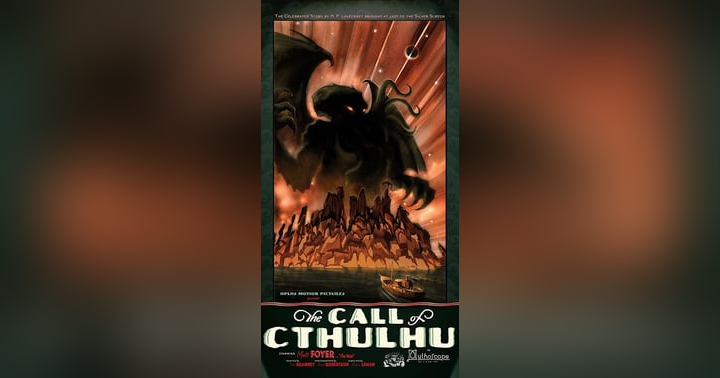“There is a mystery about this which stimulates the imagination; where there is no imagination there is no horror.”
-Arthur Conan Doyle
Being a member of several dozen horror groups throughout social media, I can safely say that no other piece of cinema has caused such derision and division over the past six months as SKINAMARINK, a 2022 experimental supernatural horror film written and directed by Kyle Edward Ball, a Canadian filmmaker in his feature film debut. Ball had previously gained some notoriety on his YouTube channel where he developed a short feature entitled “Heck”, which was successful enough to later be adapted into a longer narrative.
Rarely does a film come along that so distinctly polarizes its viewing audience with the full spectrum of love to hate. Some found it “creepy, clever and inventive”, heralding a new breed of “analog horror”, while others felt that it was “the absolute most pretentious and boring piece of shit I’ve ever witnessed!” For those who managed to stay awake throughout the sometimes tedious 100 minute run-time (like watching paint dry), SKINAMARINK was an undeniable success story.
Produced for a mere $15,000 dollars with limited theatrical release, the film went on to make over $2 million at the box office, all while creating significant word out mouth buzz and publicity, both positive and negative. When released on the streaming channel SHUDDER in February of ‘23, the film hit a much wider audience, and horror groups and forums were inundated (and still are) with posts devoted to thoughts and reviews of this micro budget movie.
For the record, I enjoyed SKINAMARINK for what it was and found parts of it spooky, particularly in relation to “entities” of sleep paralysis. Likewise, I understand that it holds a deeper subtext of childhood trauma, abuse and neglect. However, what really caught my attention is that it opened up a public dialogue about the nature of horror itself: What is horror? What is art? What is cinema?
These are important societal questions for the collective ID to process in terms of pushing new boundaries of creativity and storytelling. SKINAMARINK, even if inadvertently, invites viewers to consider these questions. Trash for some, is treasure for others, and the same can be said on the nature of fear. Some are terrified of clowns and spiders, while others might have more elaborate phobias. Though we all share certain primitive survival instincts, fear is largely in the eye of the beholder, and evolves alongside the society.
Modern culture has become somewhat desensitized since the days when Universal’s Dracula and Frankenstein were considered “scary”. With every new generation of horror enthusiasts, the actual reality around us seems to become more and more harsh. The nightly news is often worse than the fictional monsters on our television screens. Horror, both in cinema and literature, becomes an escape from the real life evils of the world; in some ways, a familiar comfort. Something malleable of which we feel both influence and control over.
It’s as old as myth and folklore itself. These campfire stories help us to confront, and hopefully better understand, our anxieties of the dark and those veiled things which loom in shadows. In many ways, horror helps us to better understand ourselves and place in this vast and rather terrifying universe.
For better or worse, we live in a world where a banana duct taped to a wall is considered art, and AI generated images are flooding the internet as “original pieces”. To me, the question of horror, art and cinema are all intertwined. It takes experimental works such as SKIMARINK to shake things up and challenge the status quo of formulaic media (even if the movie itself sometimes seems like an Artificial Intelligence fever dream).
Love, hate or complete indifference, this low budget “analog horror” movie succeeded at something which few genre films are able to accomplish on any deep level, and that’s getting viewers to consider what it is they are actually watching. In this regard, one might consider SKINAMARINK to be part of the new breed of so called “elevated horror” (a topic of which I’m sure we’ll be covering in future articles or episodes of the HORROR TO CULTURE podcast). Do we want a dozen rip-off movies copying the bare bones style of this one? No, but hopefully it helps new film makers better understand what can be done on a shoestring budget and the right promotional campaign.
As horror fans, we’re entitled to our opinions of course, but should always try to appreciate it when something new comes along that challenges mainstream tastes of popularity and displays ideas through a different lens. While there will always be the familiar classics and sequels, remakes and reboots, in many ways we are currently experiencing a new renaissance of independent horror filmmaking, and arthouse films, which due to streaming now has the opportunity to reach much wider audiences. Without adaptation and change, there is only stagnation. The presentation, and medium in which to tell stories, is evolving. Horror will be at the forefront of this current shift and movement.
======
Michael A. Dyer is the host of the HORROR TO CULTURE podcast and website.


